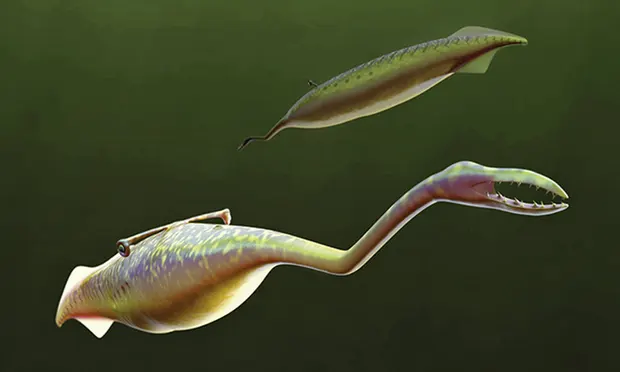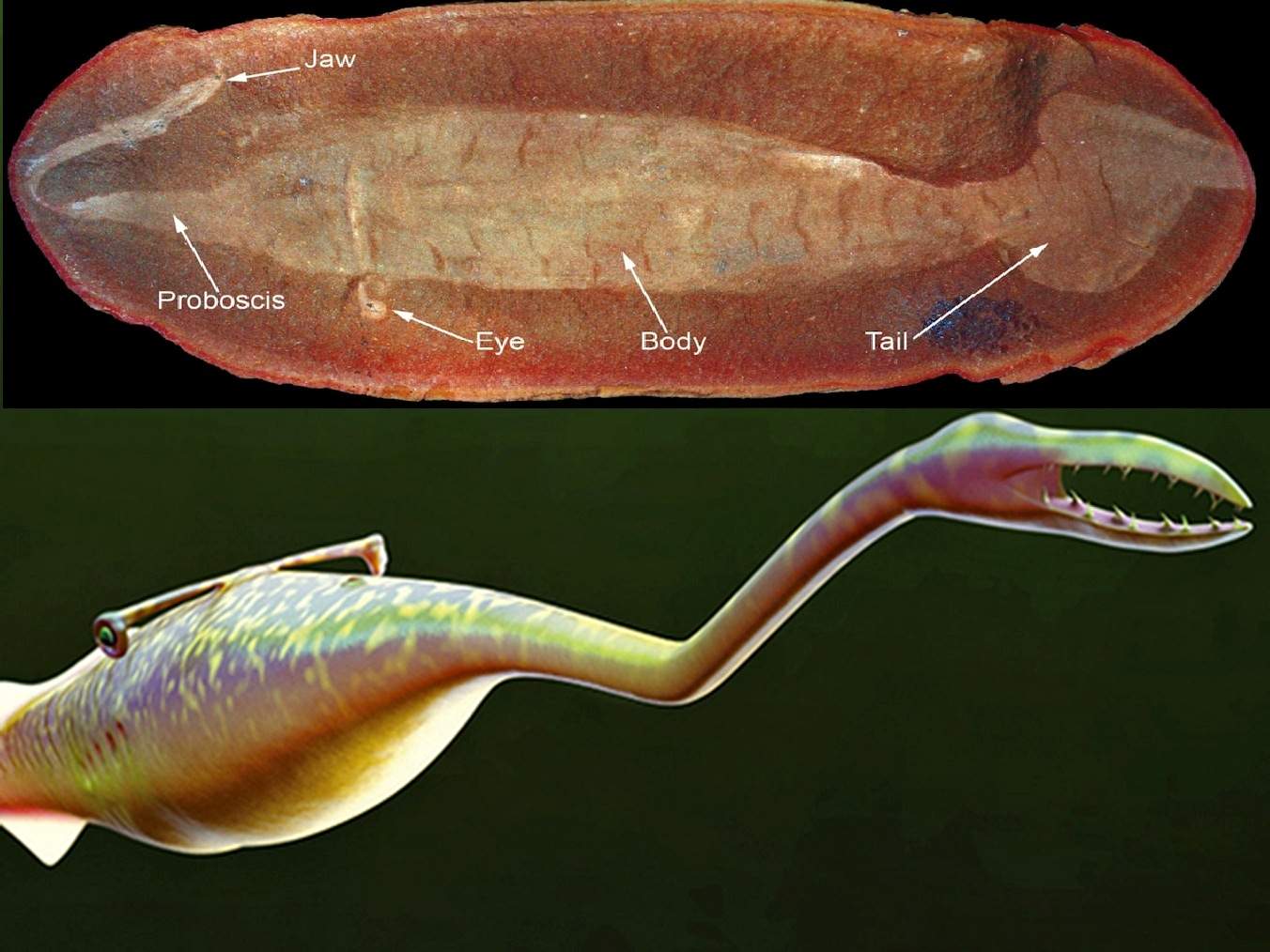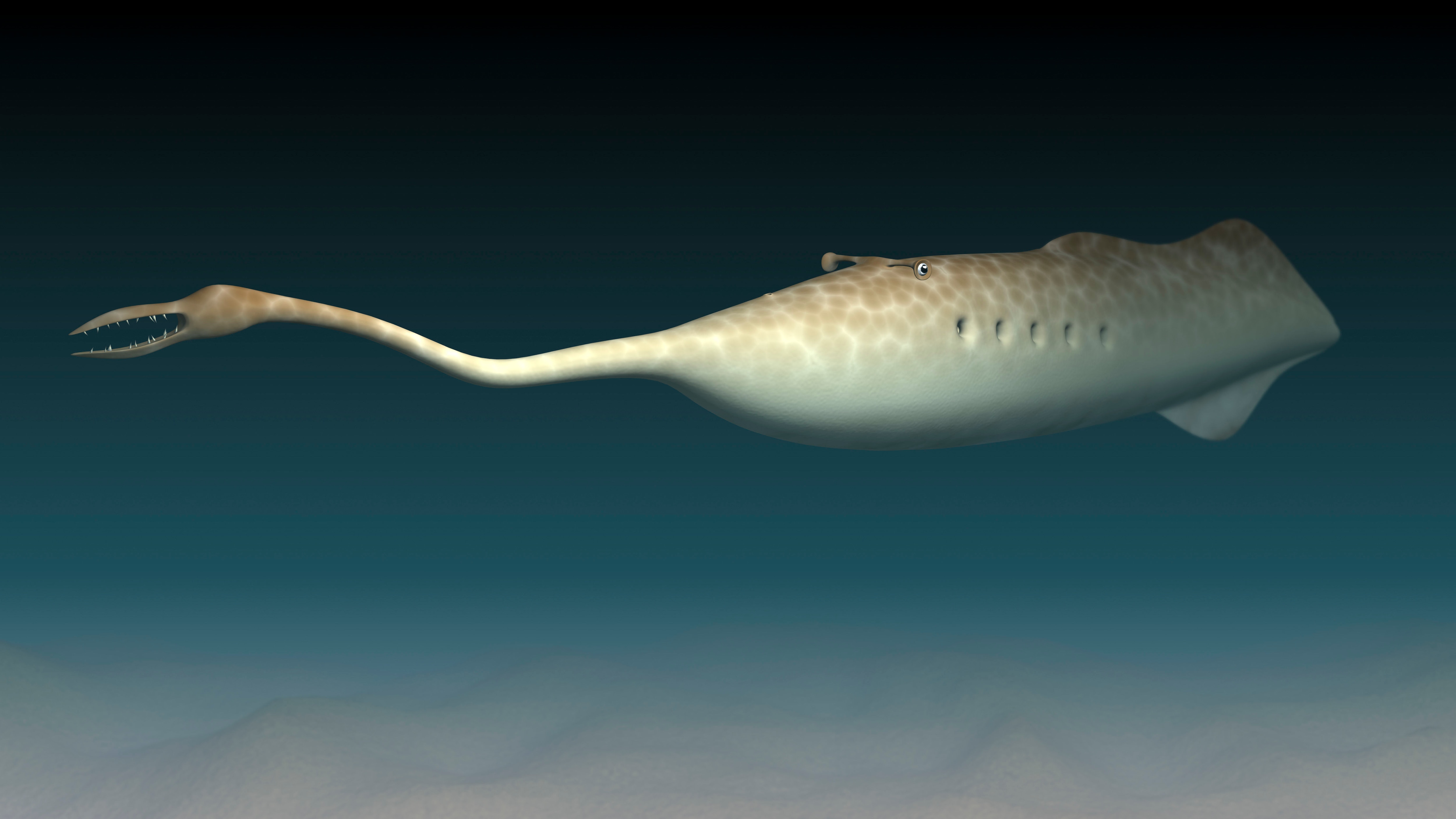The new study refutes previous claims of the Tullimonstrum gregarium being a vertebrate.

Since its discovery 70 years ago, the anatomy of the Tullimonstrum gregarium, nicknamed ‘Tully monster’, has left paleontologists confused. Over the years, scientists have gone back and forth in their categorization of this weird-looking animal as a vertebrate or an invertebrate.
But now, a new study claims to have laid these doubts to rest. A team of researchers in Japan, after studying over 150 fossilized Tullimonstrum gregarium and 70 other varied animal fossils, say that their research strongly suggests that the Tully monster was indeed not a vertebrate.

Using 3D imaging technology, the team uncovered detailed characteristics of the creature which existed on Earth some 300 million years ago and has to date been only found in the Mazon Creek fossil beds in Grundy County, Illinois in the United States.
In a statement released by the University of Tokyo, the researchers admit that the exact classification and the type of invertebrate Tullimonstrum gregarium is, are yet to be found.

A bit of history
The Tully monster has been named after Francis Tully, who in the 1950s, during one of his fossil excavation adventures at the Mazon Creek stumbled upon the (generally) 15 cm (0.492126 foot) soft-bodied animal.
“I found two rocks that had cracked open from natural weathering. They held something completely different. I knew right away. I’d never seen anything like it. None of the books had it. I’d never seen it in museums or at rock clubs. So I brought it to Chicago to the Field Museum to see if they could figure out what the devil it was,” said Tully in an interview with Chicago Tribune back in 1987.

The anatomy of this species has been a contentious topic of debate amongst scientists, ever since its discovery. The ‘monster’, resembling a fattened earthworm, is one foot long in measurement and has an airplane-like tail at the end of its wobbly body.
Tomoyuki Mikami, co-author of the study and a doctoral student at the University of Tokyo, says, “We believe that the mystery of it being an invertebrate or vertebrate has been solved. Based on multiple lines of evidence, the vertebrate hypothesis of the Tully monster is untenable. The most important point is that the Tully monster had segmentation in its head region that extended from its body. This characteristic is not known in any vertebrate lineage, suggesting a nonvertebrate affinity.”
Mikami further adds that more research on the Tully monster is needed to understand its evolutionary cycle.

Study abstract:
Tullimonstrum gregarium, also known as the Tully monster, is a well-known phylogenetic enigma, fossils of which have been found only in the Mazon Creek Lagerstätte. The affinities of Tullimonstrum have been debated since its discovery in 1966, because its peculiar morphology with stalked eyes and a proboscis cannot easily be compared with any known animal morphotypes. Recently, the possibility that Tullimonstrum was a vertebrate has attracted much attention, and it has been postulated that Tullimonstrummight fill a gap in the fossil record of early vertebrates, providing important insights into vertebrate evolutionary history. With the hope of resolving this debate, we collected 3D surface data from 153 specimens of Tullimonstrum using a high-resolution laser 3D scanner and conducted x-ray micro-computed tomographic (μCT) analysis of stylets in the proboscis. Our investigation of the resulting comprehensive 3D morphological dataset revealed that structures previously regarded as myomeres, tri-lobed brain, tectal cartilages and fin rays are not comparable with those of vertebrates. These results raise further doubts about its vertebrate affinities, and suggest that Tullimonstrum may have been either a non-vertebrate chordate or a protostome.








